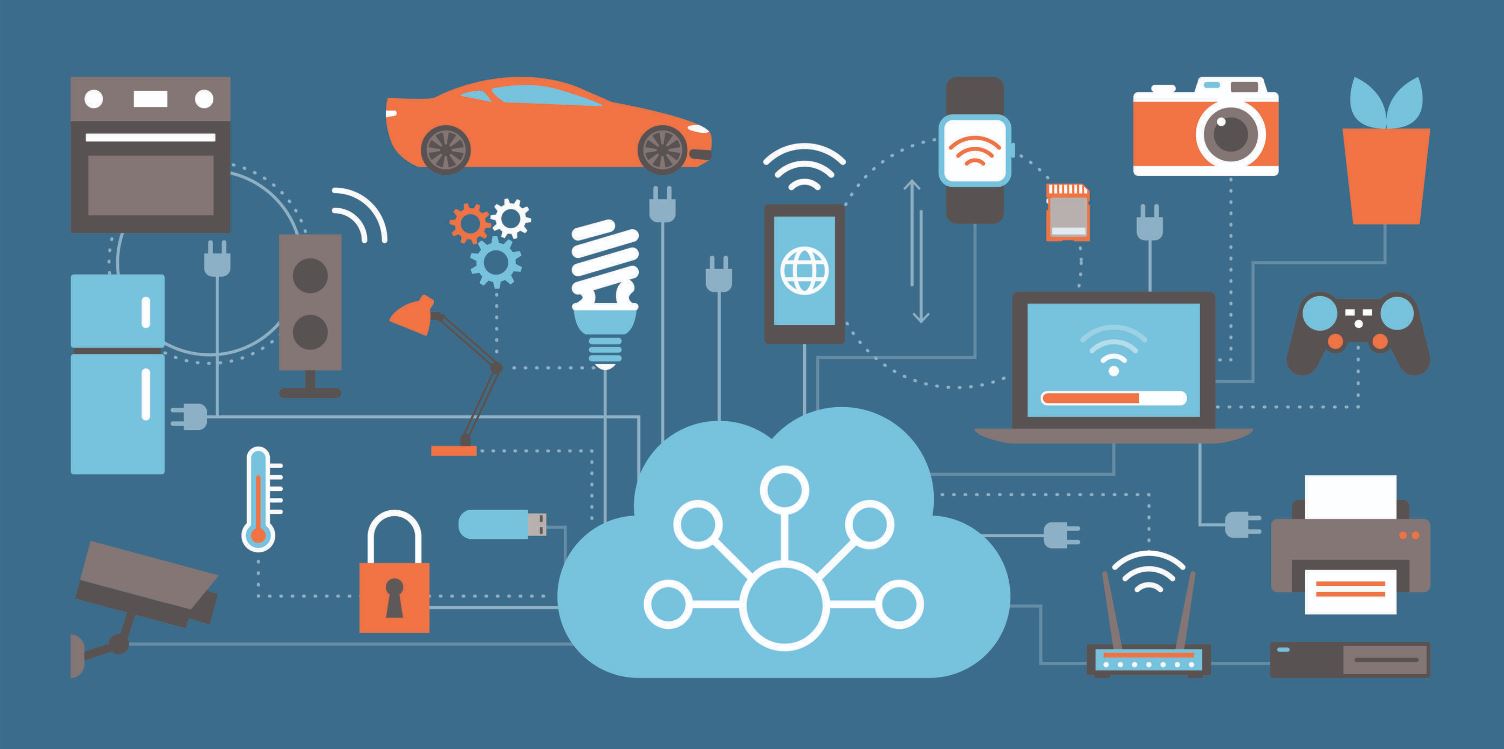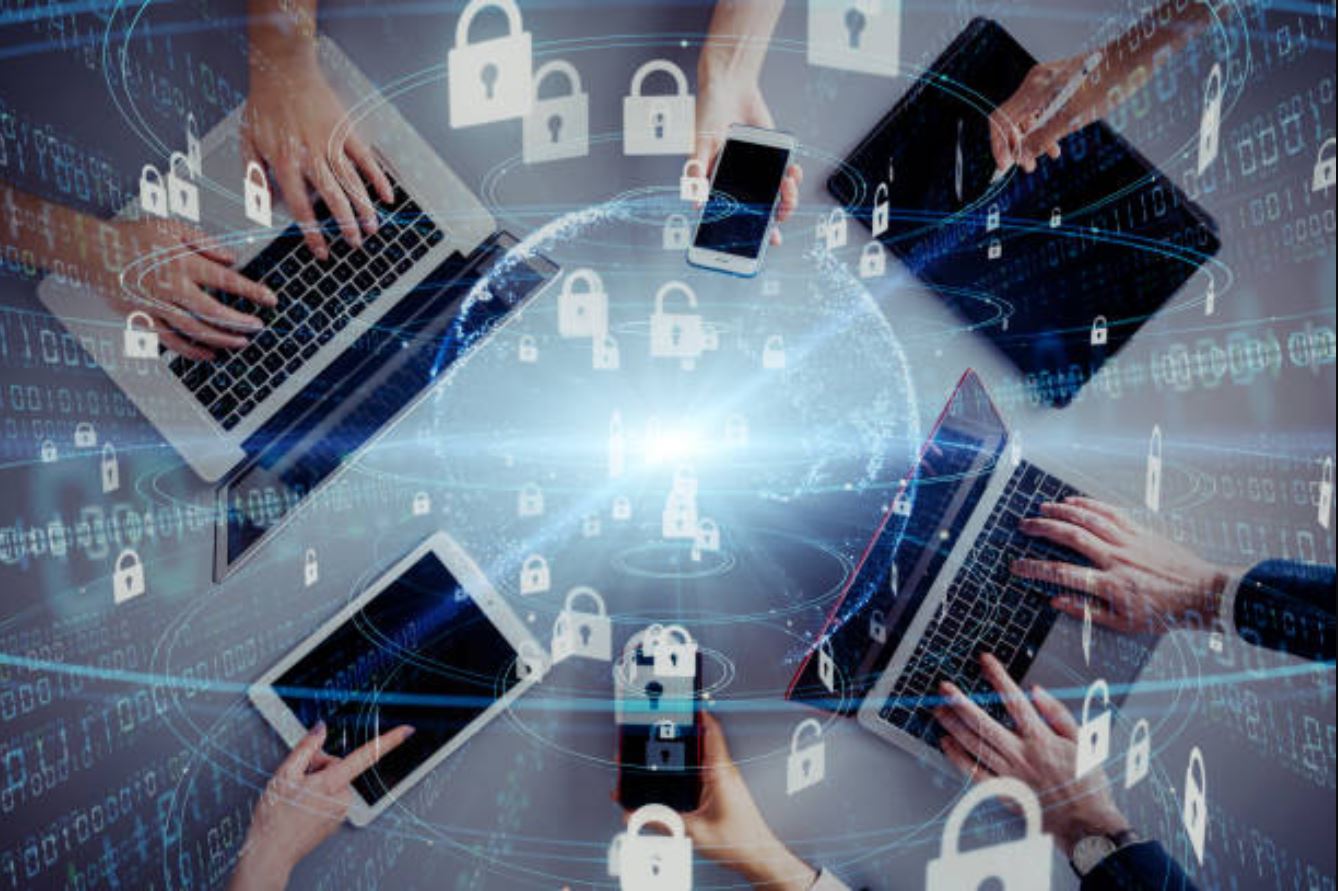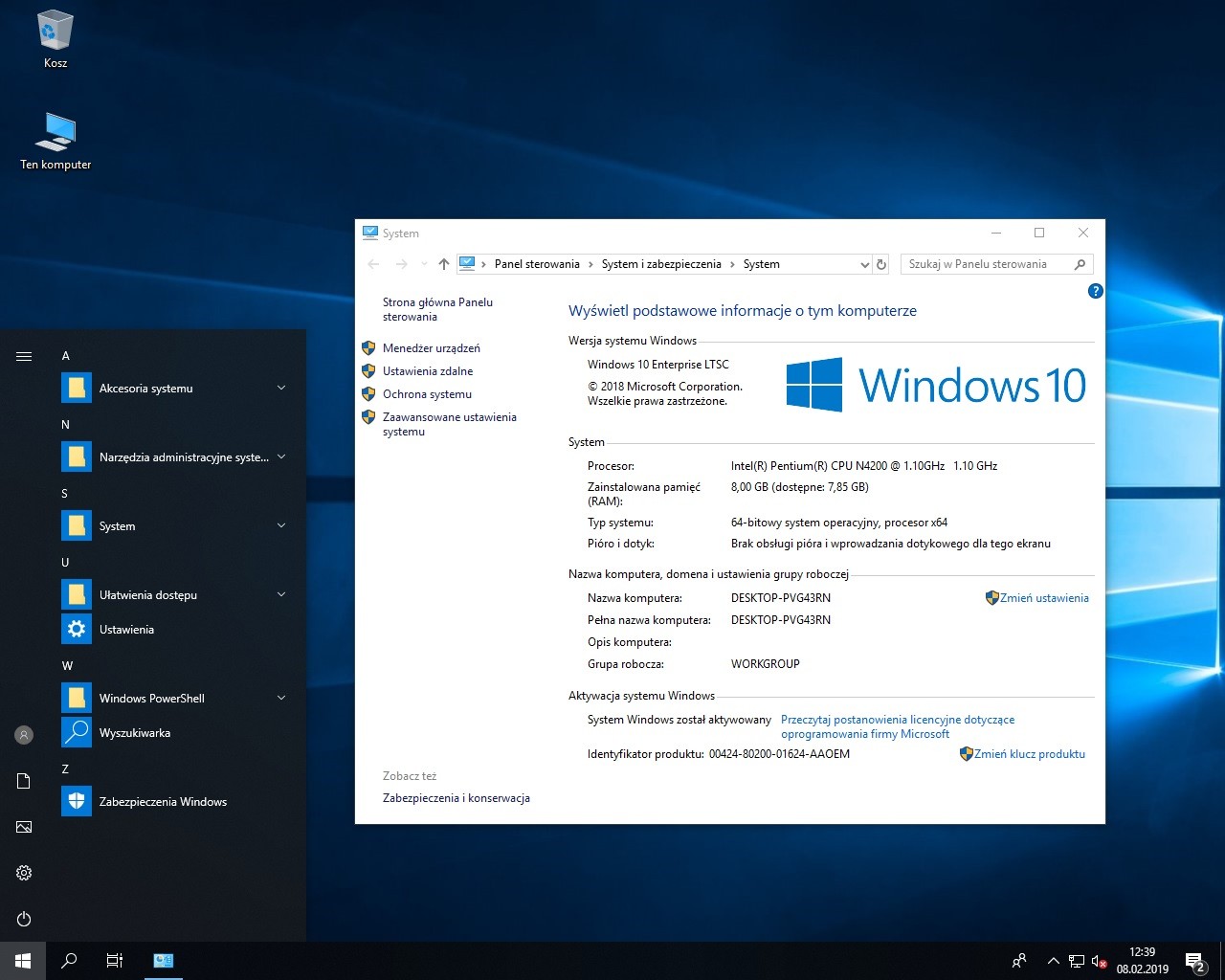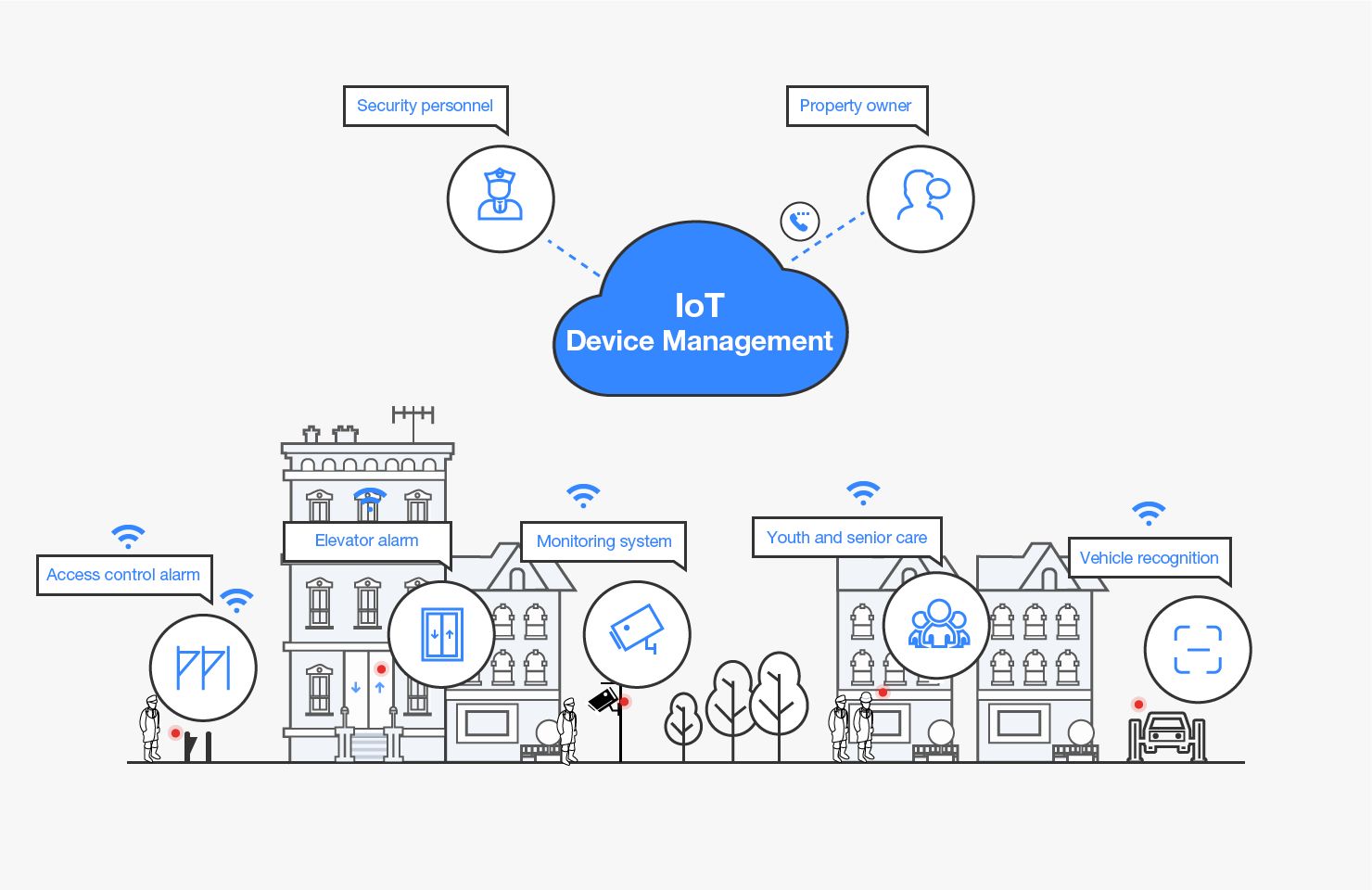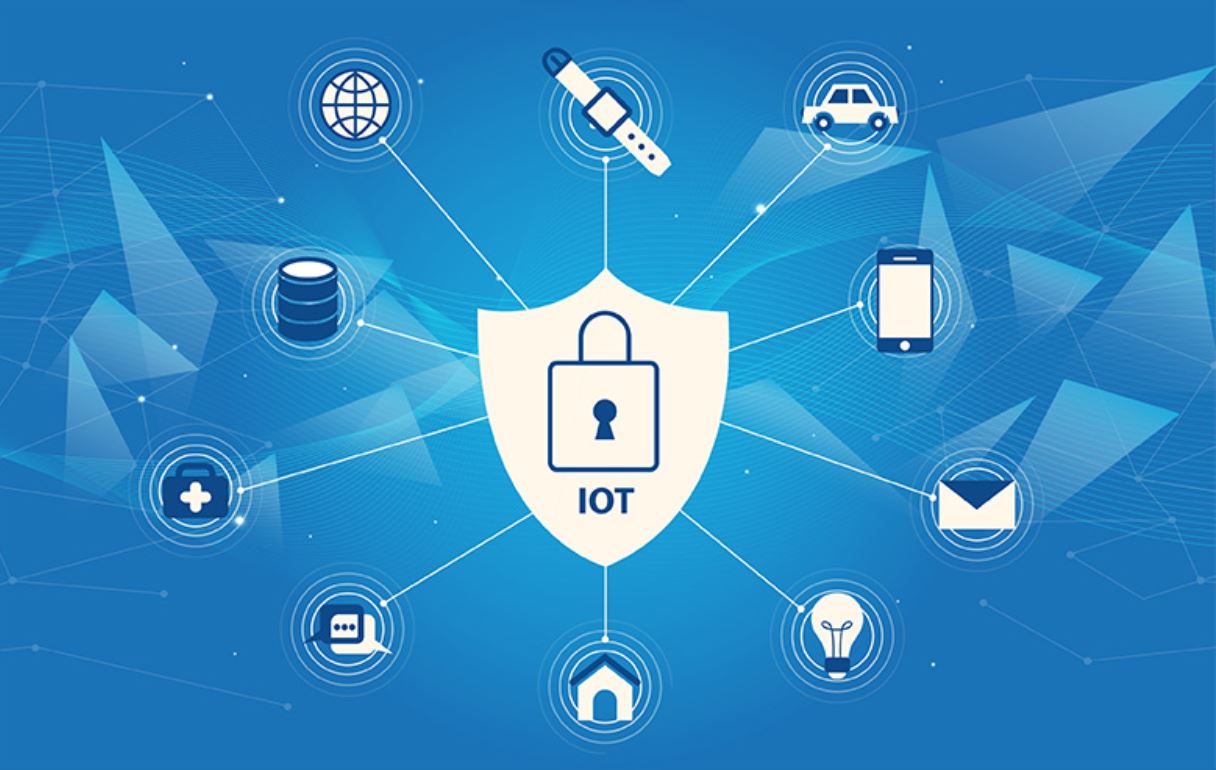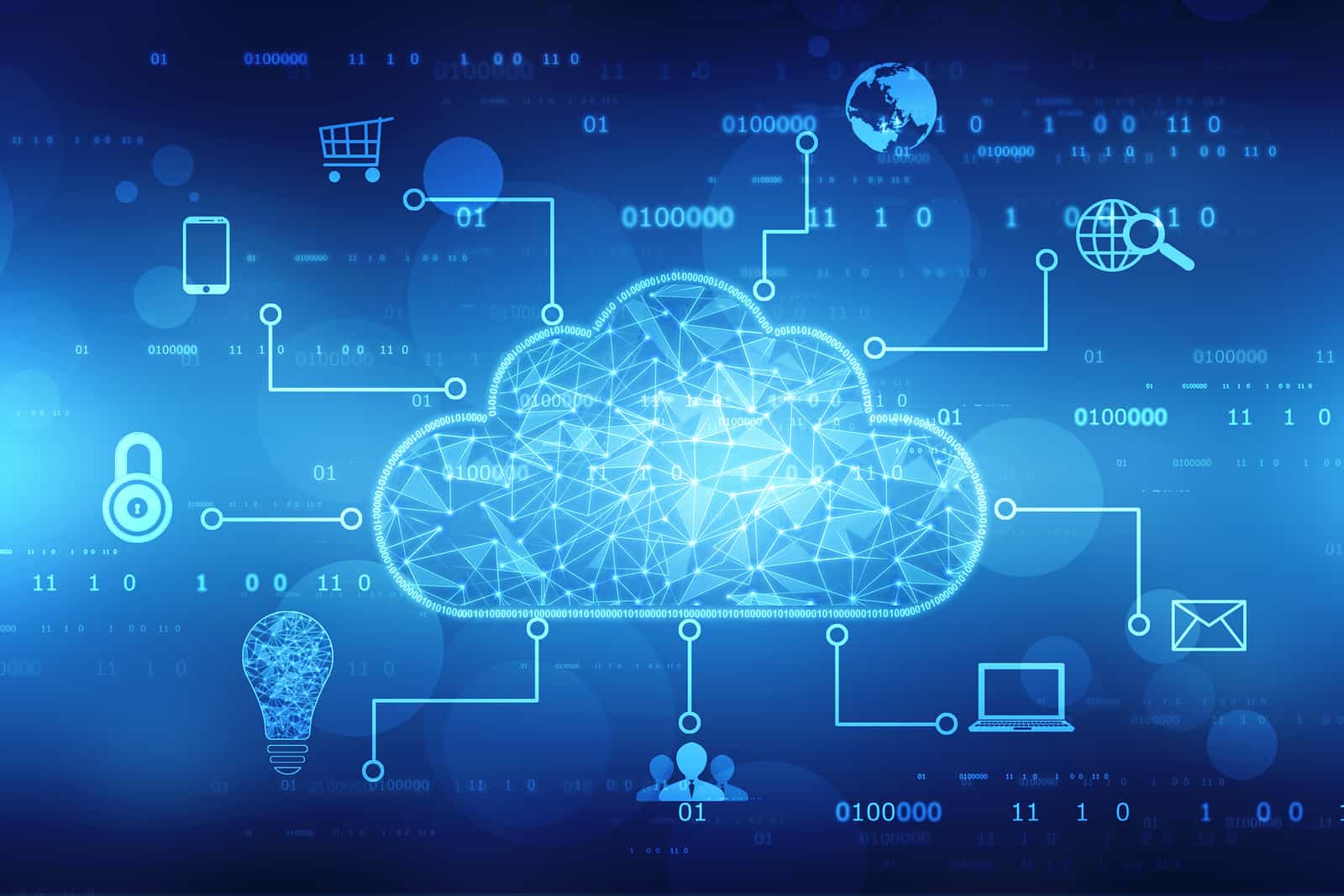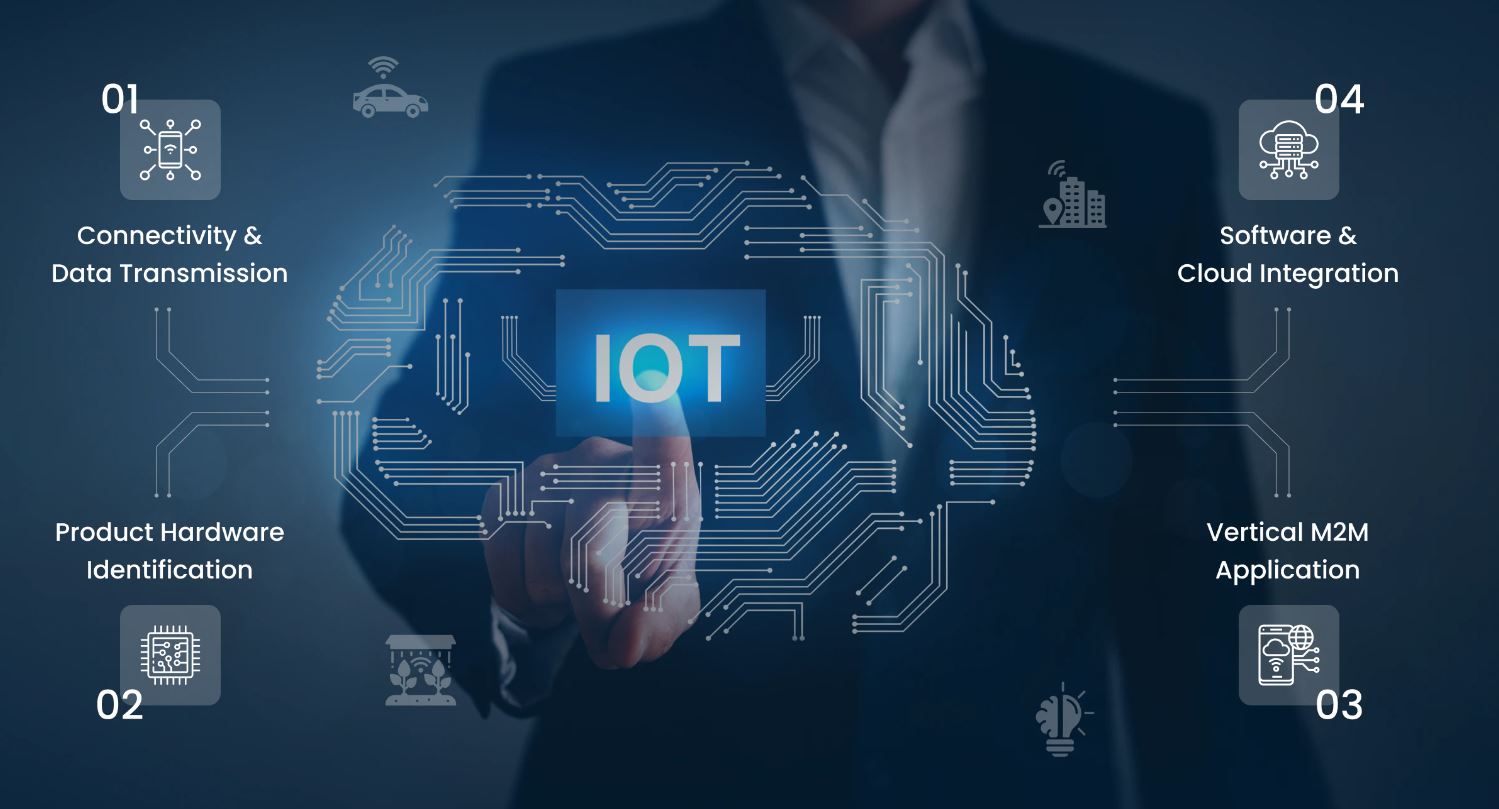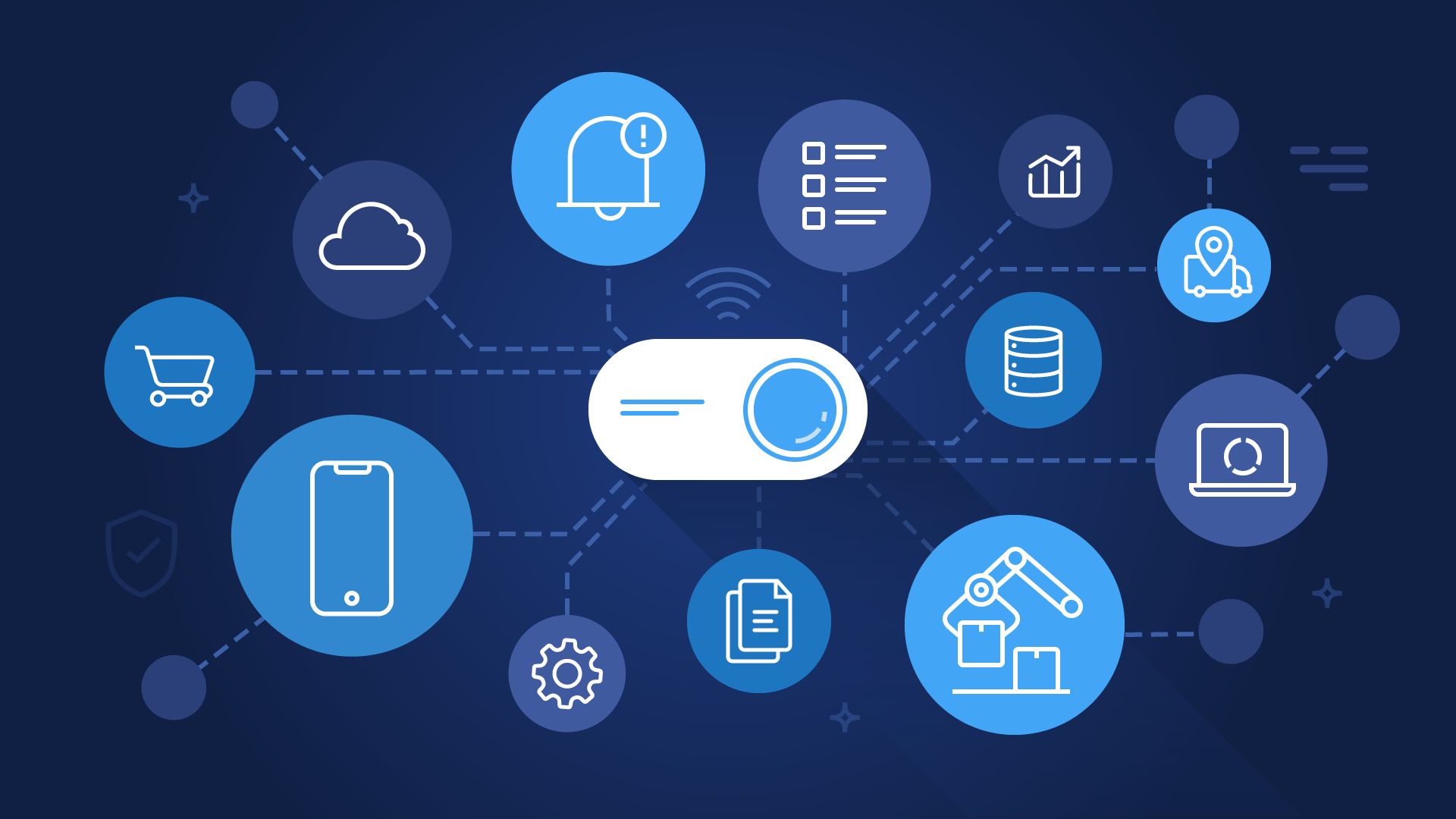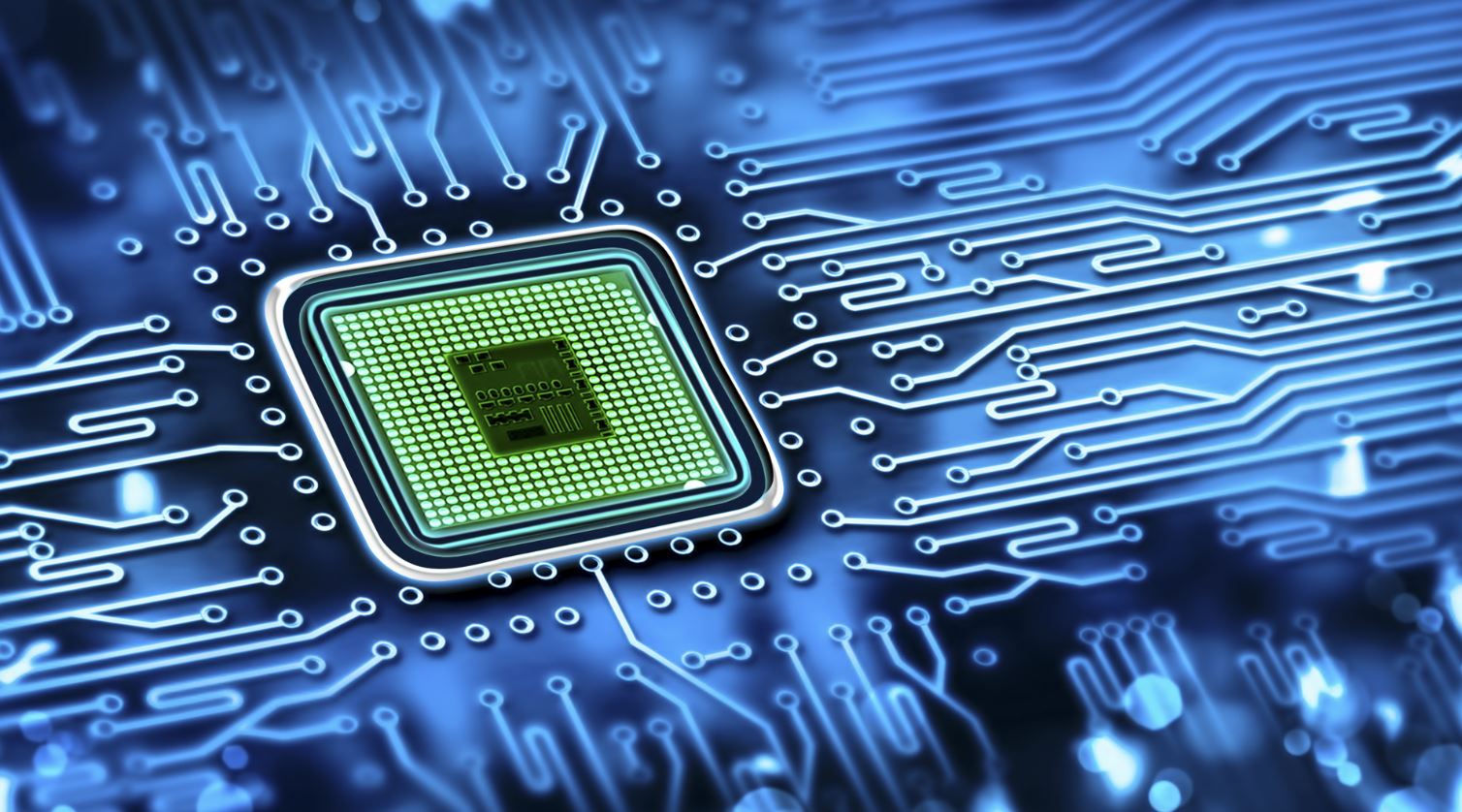Introduction
In today’s digital age, the Internet of Things (IoT) has become an integral part of our daily lives. With the proliferation of smart devices and interconnected systems, IoT devices are revolutionizing the way we interact with our surroundings. From smart homes to wearable technology, the possibilities of IoT seem endless.
But what exactly are IoT devices? How do they work? And what benefits and challenges do they bring? In this article, we will explore the fascinating world of IoT devices, providing insights into their functionality and exploring the implications they have on our lives.
IoT devices, also referred to as connected devices or smart devices, are physical objects or systems that are embedded with sensors, software, and network connectivity. These devices are designed to collect and exchange data with other devices over the internet, creating an interconnected ecosystem of digital and physical entities. This network of devices ranges from everyday household items like thermostats and refrigerators to more complex systems like industrial machinery and smart city infrastructure.
The core principle behind IoT devices is to enable communication and interaction between physical objects and digital systems, bringing automation, efficiency, and convenience into various aspects of our lives. By harnessing the power of data collection and analysis, IoT devices can provide real-time information, automate processes, and enhance decision-making capabilities.
The operation of IoT devices relies on a combination of hardware components, software applications, and network infrastructure. These devices are equipped with sensors that gather data, such as temperature, humidity, motion, or location. The collected data is then processed and transmitted over the internet using wireless protocols like Wi-Fi, Bluetooth, or cellular networks. This data is then analyzed and utilized to trigger specific actions, provide insights, or enable remote control of the devices. The seamless integration of these components enables IoT devices to perform a wide range of tasks and functions.
What are IoT Devices?
IoT devices, short for Internet of Things devices, refer to physical objects or systems that are embedded with sensors, software, and network connectivity. These devices are designed to collect and exchange data with other devices over the internet, creating a network of interconnected digital and physical entities. The power of IoT devices lies in their ability to communicate with each other and with humans, enabling automation, efficiency, and convenience in various aspects of our lives.
IoT devices come in a wide range of forms and functions. They can be found in everyday items such as household appliances, wearable technology, or even in complex systems like industrial machinery and smart city infrastructure. Examples of IoT devices include smart thermostats that allow remote control and monitoring of home temperature, fitness trackers that track your physical activities and provide health insights, smart locks that provide keyless entry to your home, or even smart cars that can connect to the internet and provide real-time information and navigation assistance.
The distinguishing feature of IoT devices is their ability to collect and exchange data. These devices are equipped with sensors that can measure various parameters such as temperature, humidity, motion, light, or location. The collected data is then processed and transmitted over the internet using wireless protocols like Wi-Fi, Bluetooth, or cellular networks.
Once the data is transmitted, it can be analyzed and utilized in a multitude of ways. For example, in a smart home setup, the temperature and occupancy data collected by IoT devices can be analyzed to optimize energy consumption and ensure efficient heating or cooling. In the industrial sector, IoT devices can be used to monitor and control machinery, detect anomalies, and predict maintenance needs, leading to increased productivity and cost savings.
IoT devices have the potential to revolutionize various industries and sectors. They can facilitate smart cities by optimizing traffic flow, improving waste management systems, and enhancing overall quality of life. In the healthcare industry, IoT devices can monitor patients’ vital signs remotely and provide timely medical assistance. Agriculture can benefit from IoT devices by enabling precision farming techniques and efficient resource utilization. The possibilities are endless.
How do IoT Devices Work?
IoT devices work by combining hardware components, software applications, and network connectivity to collect, process, and exchange data. The process involves multiple steps, from data sensing to data analysis and action implementation.
The first step in the functioning of IoT devices is data sensing. These devices are equipped with various sensors that can collect data on parameters such as temperature, humidity, motion, light, or location. For example, a smart thermostat may have sensors that measure the current temperature in a room. These sensors gather the data and convert it into a digital format that can be processed and transmitted.
Once the data is collected, it is processed and analyzed by the software applications embedded in the IoT devices or on connected systems. This analysis involves extracting insights and valuable information from the raw data. For instance, in the case of the smart thermostat, the software may analyze the temperature data and determine if it needs to adjust the heating or cooling settings in the room.
After the data analysis, the IoT devices utilize network connectivity to transmit the processed information to other devices or systems. This is typically done using wireless protocols such as Wi-Fi, Bluetooth, or cellular networks. For instance, the smart thermostat may send data to a central control system or to the user’s smartphone for remote monitoring and control.
The final step in the functioning of IoT devices is the implementation of actions based on the analyzed data. This can range from simple tasks like adjusting the temperature in a smart thermostat to more complex actions like controlling the speed and direction of a robotic arm in an industrial setting. The implementation of actions can happen automatically based on pre-defined rules or can be triggered by input from users or external systems.
It is worth noting that the seamless operation of IoT devices relies heavily on network infrastructure and security protocols. A robust and reliable network is essential for transmitting data between devices in a timely manner. Additionally, given the sensitive nature of the data collected by IoT devices, ensuring the security and privacy of the transmitted and stored information is of utmost importance.
Overall, IoT devices work by combining hardware, software, and connectivity to collect, process, and transmit data, enabling automation, optimization, and improved functionality in various aspects of our lives. They have the potential to transform industries, enhance efficiency, and provide new experiences to users. The continuous advancements in technology are further expanding the capabilities and applications of IoT devices, making them an integral part of our connected world.
Examples of IoT Devices
The Internet of Things (IoT) has permeated various aspects of our lives, and IoT devices can be found in a wide range of applications. Here are some notable examples of IoT devices:
- Smart Home Devices: These include devices like smart thermostats, smart lighting systems, and smart security cameras. Smart thermostats, such as the Nest Learning Thermostat, can learn your schedule and adjust the temperature accordingly, optimizing energy consumption. Smart lighting systems allow you to control the brightness and color of your lights using a smartphone or voice commands. Smart security cameras provide remote monitoring and real-time alerts for enhanced home security.
- Wearable Technology: Fitness trackers, smartwatches, and health monitoring devices fall under this category. Fitness trackers, like Fitbit and Apple Watch, monitor your physical activity, heart rate, and sleep patterns. They provide insights on your health and can even nudge you to stay active. Health monitoring devices, such as glucose monitors and blood pressure monitors, allow individuals with medical conditions to track their health metrics conveniently.
- Smart Appliances: IoT devices have revolutionized home appliances. Smart refrigerators can track your food inventory and send notifications to your smartphone when items are running low. They can also suggest recipes based on the ingredients you have. Smart washing machines can be controlled remotely, allowing you to start or monitor a wash cycle from anywhere. These appliances offer convenience and energy efficiency.
- Industrial IoT Devices: Industrial sectors benefit greatly from IoT devices. For example, in agriculture, IoT devices like soil moisture sensors and weather monitors help farmers optimize irrigation and determine the right time for planting. In manufacturing, IoT devices are used for predictive maintenance, where sensors monitor machine health and flag any abnormalities, preventing costly breakdowns. IoT devices in logistics and transportation enable real-time tracking of goods, ensuring efficient supply chain management.
- Smart City Infrastructure: Many cities are adopting IoT devices to improve urban living. For instance, smart streetlights have sensors that detect movement, adjusting the brightness accordingly to conserve energy. Waste management systems use IoT devices to monitor bin levels, optimizing collection routes and reducing costs. Smart parking systems guide drivers to available parking spots, reducing congestion and saving time for motorists.
These examples showcase the versatility of IoT devices and their impact on various domains. With the increasing adoption of connectivity and data-driven technologies, the applications for IoT devices will continue to expand, transforming the way we live, work, and interact with our environment.
Benefits of IoT Devices
The advent of the Internet of Things (IoT) has brought about numerous benefits and advantages across various industries and everyday life. Let’s explore some of the key benefits of IoT devices:
- Increased Efficiency: IoT devices enable automation and optimization, leading to increased efficiency in various processes. For example, in manufacturing, IoT devices can monitor equipment performance in real-time, allowing for proactive maintenance and minimizing downtime. In smart homes, IoT devices can adjust energy consumption based on occupancy and ambient conditions, resulting in reduced utility bills.
- Improved Decision-Making: The data collected and analyzed by IoT devices provides valuable insights that can inform decision-making. For instance, in agriculture, IoT devices can monitor soil moisture levels, crop health, and weather conditions, helping farmers make informed irrigation and planting decisions. In healthcare, IoT devices can continuously monitor patient vital signs, alerting healthcare providers to any anomalies and facilitating timely interventions.
- Enhanced Convenience: IoT devices offer increased convenience and ease of use. For example, smart home devices allow users to control lighting, temperature, and appliances remotely via a smartphone or voice commands. Wearable devices provide real-time fitness tracking and can even provide notifications, such as reminders to move or take medication. These devices streamline everyday tasks and make life more convenient for users.
- Improved Safety and Security: IoT devices play a crucial role in improving safety and security in various contexts. For instance, in smart homes, IoT security systems can provide remote monitoring and real-time alerts in case of suspicious activities or emergencies. In industries, IoT sensors can detect hazardous conditions, ensuring worker safety. IoT-enabled surveillance systems in public spaces enhance overall security by providing video monitoring and real-time threat detection.
- Advanced Analytics and Insights: The data collected by IoT devices can be analyzed to extract meaningful insights and patterns. Businesses can leverage this data to gain a deeper understanding of customer behavior, optimize operations, and drive innovation. In healthcare, the analysis of IoT-generated data can lead to personalized treatment plans and early detection of diseases.
The benefits of IoT devices extend beyond these examples, and they have the potential to transform industries, enhance quality of life, and drive economic growth. However, it is important to address associated challenges and concerns, such as data privacy, cybersecurity, and interoperability, to ensure that the full potential of IoT is realized.
Challenges and Concerns with IoT Devices
While the Internet of Things (IoT) offers numerous benefits, there are also several challenges and concerns that arise with the increasing use of IoT devices. It is essential to address these issues to ensure the safe and secure implementation of IoT technology. Let’s explore some of the key challenges and concerns associated with IoT devices:
- Data Security and Privacy: One of the primary concerns with IoT devices is the security and privacy of the data they collect and transmit. As these devices gather sensitive information, such as personal and financial data, there is a risk of unauthorized access or data breaches. Robust security measures, such as encryption and user authentication, must be in place to protect the privacy of individuals and prevent data exploitation.
- Interoperability: IoT devices are manufactured by various companies and may utilize different communication protocols and standards. This lack of interoperability can hinder seamless integration and data exchange between devices from different manufacturers. To overcome this challenge, industry-wide standards and protocols need to be established to ensure compatibility among different IoT devices and systems.
- Reliability and Resilience: IoT devices rely heavily on network connectivity to function effectively. Any disruptions in network connectivity, such as power outages or weak signal strength, can impact the reliability and resilience of IoT devices. Backup solutions and redundant connections must be in place to minimize the impact of such disruptions and ensure continuous operation of IoT devices.
- Sustainability and Energy Consumption: The widespread deployment of IoT devices raises concerns about their environmental impact and energy consumption. IoT devices require power to function and continuously transmit data. It is essential to develop energy-efficient IoT devices and implement sustainable practices to mitigate the environmental footprint associated with their manufacture, usage, and disposal.
- Ethical Considerations: As IoT devices become more ingrained in our lives, ethical considerations arise. For instance, data collected by IoT devices may be used for targeted advertising or manipulation. There is a need for clear guidelines and regulations to ensure the ethical use of data and protect individuals’ rights and freedoms.
Addressing these challenges and concerns requires collaborative efforts among industry stakeholders, policymakers, and technology experts. Robust cybersecurity measures, privacy regulations, and standardization efforts are crucial to establishing trust and ensuring the responsible implementation of IoT devices.
Overall, recognizing and addressing the challenges and concerns associated with IoT devices will contribute to the sustainable and secure development of this transformative technology. By prioritizing privacy, security, interoperability, and sustainability, we can harness the full potential of IoT while safeguarding the interests of individuals and organizations.
Conclusion
The Internet of Things (IoT) has emerged as a groundbreaking technology that is reshaping our world and revolutionizing the way we interact with our environment. IoT devices, with their capabilities to collect, process, and exchange data, have found applications in various industries and domains, from smart homes to industrial automation and beyond.
The benefits of IoT devices are vast and far-reaching. They offer increased efficiency, improved decision-making, enhanced convenience, improved safety and security, and advanced analytics and insights. IoT devices have the potential to improve our quality of life, drive innovation, and boost economic growth.
However, the use of IoT devices also poses challenges and concerns that need to be addressed. Data security and privacy, interoperability, reliability, sustainability, and ethical considerations are among the key issues that require attention to ensure the responsible and safe implementation of IoT technology.
To overcome these challenges, collaboration among industry stakeholders, policymakers, and technology experts is crucial. Robust security measures, privacy regulations, industry-wide standards, and sustainable practices are needed to establish trust, protect data privacy, and foster the seamless integration and interoperability of IoT devices.
As technology continues to advance and connectivity becomes more prevalent, the possibilities for IoT devices are limitless. With ongoing improvements and innovation, IoT devices will continue to shape the future, transforming industries, optimizing processes, and providing new and exciting experiences for individuals and businesses.
In conclusion, the Internet of Things has ushered in a new era of connectivity, offering immense opportunities and challenges. By addressing the concerns and harnessing the benefits of IoT devices, we can unlock their full potential and create a more connected and efficient world.







